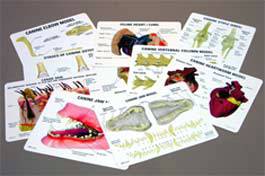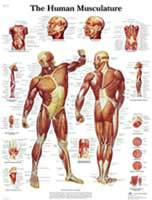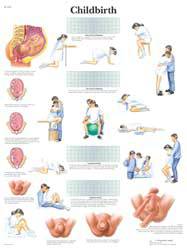Home » Hospital & Durable Medical Equipment » Anatomical Charts: A Cross Section Into the Human Body » Anatomical Charts: A Cross Section Into the Human Body
Anatomical Charts: A Cross Section Into the Human Body
Human anatomical charts have been used since the 18th century for many purposes in the healthcare profession. Whether you’re a surgeon, chiropractor, physical therapist, or masseuse, it doesn’t matter what distinct care you provide, anatomical charts offer quick and specific information to both patient and healthcare professional. Anatomical charts are wonderful reference tools when describing a diagnosis, disease, injury, and disorder. Anatomical charts serve to educate and inform patients, providing them a visual reference to what’s going on inside their bodies. Anatomical charts are also used in the classroom, offering students and apprentices a detailed look into multiple human systems. By navigating our on line catalog, you’ll discover that Medical Supplies and Equipment Company carries a wide selection of human anatomical charts. Below are brief descriptions of a few of the anatomical charts in our inventory.
The Muscular System chart shows anterior and posterior views of the muscular system. It also illustrates the musculature of the right hand, right foot, posterior abdominal wall, and the right half of the diaphragm.
The Skeletal System chart shows anterior, posterior, and lateral views of the skeletal system. There are also close-ups of the ligaments in the right hand, ligaments of the right foot, right knee joint, the bones of the inner ear, and more inset in the chart.
The Vertebral Column anatomical chart shows the right side of the vertebral column with markings to show the location of the axis and atlas, the cervical, thoracic, and lumbar vertebrae, the sacrum, and coccyx. It also includes various close-ups of the second lumbar vertebra, fifth cervical vertebra, seventh and eleventh thoracic vertebrae, the atlas, axis, sacrum, and coccyx.The Shoulder and Elbow chart shows the general anatomy of both shoulder and elbow. It illustrates the anterior, posterior, lateral, and superior views of the shoulder. It shows the shoulder joint socket and location of the humerus where it articulates with the scapula. It also provides multiple views of the elbow including fractures and tennis elbow.
The Arthritis-Joint Inflammation chart details the main joints affected by rheumatoid arthritis and osteoarthritis. It gives examples of swelling, bone spurs, the narrowing of joint spaces, and the erosion of cartilage. Along with describing the symptoms of arthritis, it also describes other types of arthritic conditions such as gout, bursitis, tendonitis, and fibromyalgia.
A condition that affects many people today and is projected to affect more in the future is carpal tunnel syndrome. The Understanding Carpal Tunnel Syndrome chart explains the condition and shows the affected areas of the hand and wrist. It lists the causes, risk factors, and symptoms of the syndrome as well as offering management techniques and preventive measures.
Another useful anatomical chart is The Human Spine – Disorders chart. This diagram explains how a person’s posture can change due to different spinal disorders and how other diseases can cause back pain. It details a herniated disc, vertebrae and sacrum fractures, arthritis of the hip, and the effects of osteoporosis. It also shows the anatomy of a typical vertebra and intervertabral disc.
There is also a chart that details Whiplash Injuries of the Head and Neck. It explains whiplash and shows muscle injury, spinal cord injury, hyperflexion, hyperextension, and ligament damage.
All anatomy charts are 20 inches wide, 26 inches long, and are available in light laminated card stock and heavy laminated card stock. Spanish versions are also available.
We also carry 18” x 25” 3-D anatomical charts which allow you to feel texture and form.
MSEC remains dedicated to providing the very best and the very latest in medical supplies and equipment. We never cease to be on the lookout for the latest innovation that will benefit both our many clients and the patients they dedicate their lives to caring for. If you have any difficulty finding your choices in our vast inventory, call our customer service at 1-877-706-4480 to speed up your order or to make a special request. We are always happy to help you.













 Unit: single
Unit: single





